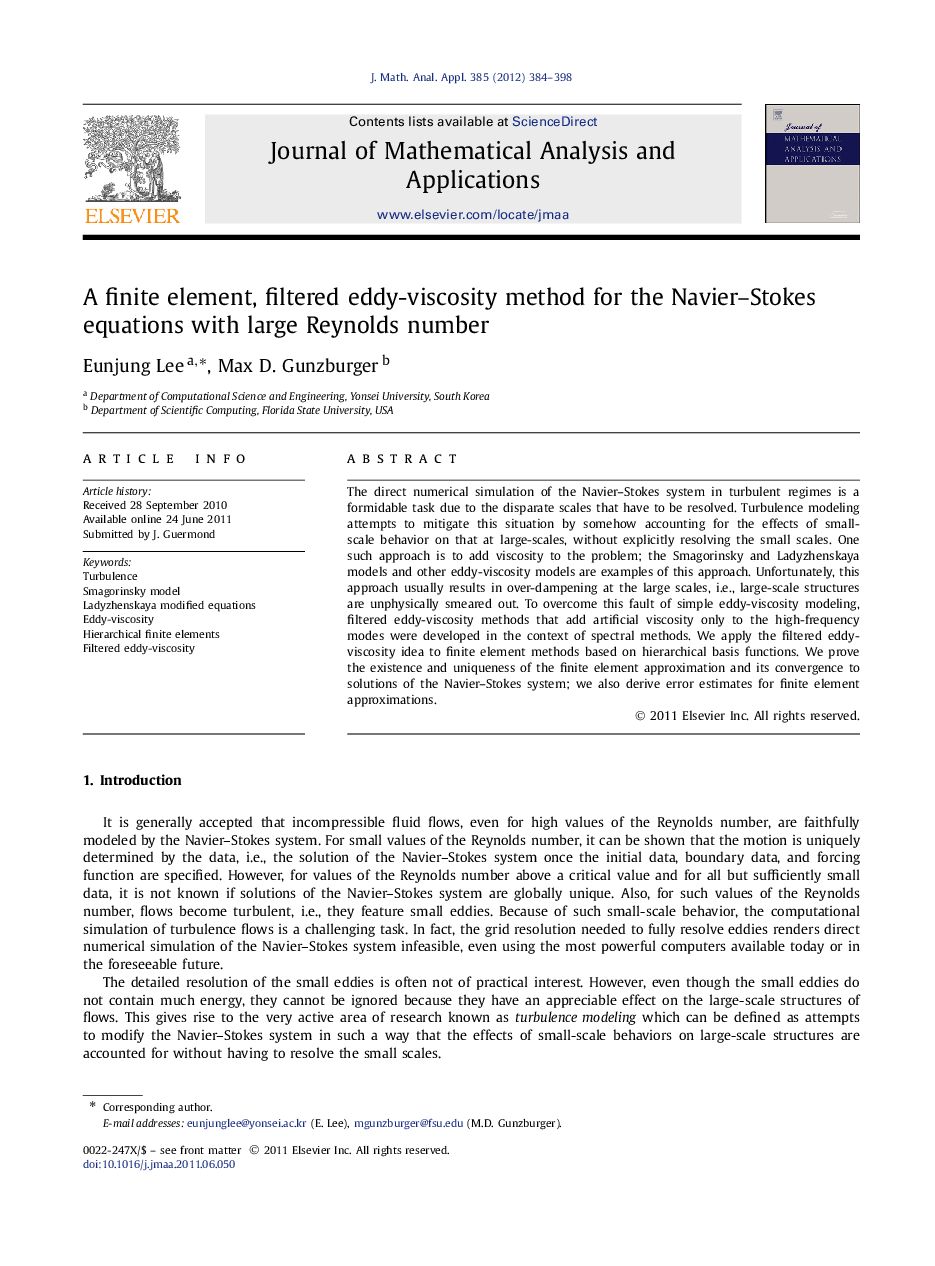| کد مقاله | کد نشریه | سال انتشار | مقاله انگلیسی | نسخه تمام متن |
|---|---|---|---|---|
| 4618169 | 1339399 | 2012 | 15 صفحه PDF | دانلود رایگان |

The direct numerical simulation of the Navier–Stokes system in turbulent regimes is a formidable task due to the disparate scales that have to be resolved. Turbulence modeling attempts to mitigate this situation by somehow accounting for the effects of small-scale behavior on that at large-scales, without explicitly resolving the small scales. One such approach is to add viscosity to the problem; the Smagorinsky and Ladyzhenskaya models and other eddy-viscosity models are examples of this approach. Unfortunately, this approach usually results in over-dampening at the large scales, i.e., large-scale structures are unphysically smeared out. To overcome this fault of simple eddy-viscosity modeling, filtered eddy-viscosity methods that add artificial viscosity only to the high-frequency modes were developed in the context of spectral methods. We apply the filtered eddy-viscosity idea to finite element methods based on hierarchical basis functions. We prove the existence and uniqueness of the finite element approximation and its convergence to solutions of the Navier–Stokes system; we also derive error estimates for finite element approximations.
Journal: Journal of Mathematical Analysis and Applications - Volume 385, Issue 1, 1 January 2012, Pages 384-398